![First white child born in Cook Inlet, Martha White, and her mother, left, in Sunrise, Alaska in 1898. The child is wearing a hat and holding a cat. A man, several wooden buildings and a pile of logs are visible in the background. Photograph taken during the 1898 Cook's Inlet Exploring Expedition led by Edwin F. Glenn on behalf of the U.S. Army. The photographer is unidentified. Title taken from caption written on back of photograph. [Edwin F. Glenn papers, Archives and Special Collections, Consortium Library, University of Alaska Anchorage]](https://northernlightmedia.org/wp-content/uploads/2015/11/1st_white_child_born_in_cook_inlet___mother.jpg?w=300&h=234)
First white child born in Cook Inlet, Martha White, and her mother, left, in Sunrise, Alaska in 1898. The child is wearing a hat and holding a cat. Photograph taken during the 1898 Cook’s Inlet Exploring Expedition led by Edwin F. Glenn on behalf of the U.S. Army. [Edwin F. Glenn papers, Archives and Special Collections, Consortium Library, University of Alaska Anchorage]
“The first woman to establish a home on Cook inlet was Mother White, the wife of a whaler who made voyages to Bering sea and the Arctic ocean. He brought his wife with him, and she built a log cabin store and roadhouse on the shores, of Cook inlet, about 200 miles from the site of the new town of Anchorage. It was there that Miss Martha White was born. She was the first white child to see the light of day In that part of the world, and when the work began on the government railway she was chosen to drive the first spike.
“It is more than 20 years since Mrs. White established her store and roadhouse. She dealt with the Indians and trappers, and later on started a fish cannery and saltery. In one year she put up 2.000 barrels of salted salmon. She made considerable money, which she invested in mining. She was a part of the gold stampede to Sunrise, on Turnagain arm, where she made so much that she might have retired in comfort. Then bad luck came. She put her winnings into unsuccessful properties and lost them. She went back to the roadhouse business and established little hotels at Hope City and Sunrise. These were a success and she gradually accumulated some property. In the meantime, her daughter was growing up and Mother White decided to leave Alaska and go to the states to educate her. She moved to Chicago and opened a little store there, which supported her until a few years ago, when Martha’s education was finished. “And then came that longing to go back to Alaska that permeates the souls of all who have made their homes here for any length of time. It so obsessed Mrs. White that she left her daughter in Chicago and went alone to the north. With tears in her eyes, she told me how she came back to the mining camps of Hope and Sunrise and how they affected her. Many of the old prospectors whom she had known were still there, and she felt that here was her home and her friends. The result was that she came back to Alaska, bringing her daughter with her, and when the work on the railroad began she was one of the first on the ground at the new town of Anchorage. She came in with a stock of lumber and canvas, and before a rail was laid or any excavation made she had put up tents for eating and lodging down on the flats. Her sleeping tent was equipped with bunks one over the other like those of a sleeping car, and each bed brought her-a dollar a night. When the new site for Anchorage was chosen she built a frame hotel on the main street, and she is doing so well that she will probably have to put up a larger building in the near future.”
![Martha White driving the first spike in the construction of the Alaska Railroad, Ship Creek, April 29, 1915. [Photographer John E. Thwaites. University of Washington Libraries, Special Collections Division.]](https://northernlightmedia.org/wp-content/uploads/2015/11/woman_driving_the_first_spike_in_the_construction_of_the_alaska_railroad_ship_creek_1915.jpg?w=300&h=188)
![Mother Martha White standing in doorway, no date. [Frank and Frances Carpenter collection (Library of Congress)]](https://northernlightmedia.org/wp-content/uploads/2015/11/screen-shot-2015-11-05-at-11-14-35-am.png?w=189&h=300)
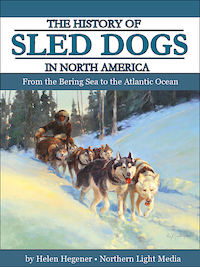






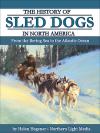
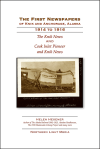








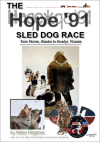



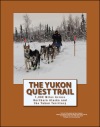







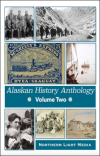
Martha White was also the second woman to be awarded the Gold Congressional Lifesaving Medal for rescuing 3 sailors from the shipwrecked British Bark Ferndale off Copalis Beach Washington, January 29, 1892. Martha White is my great great aunt. I have a lot of family history/photographs of her. She was a remarkable individual
LikeLike
Thank you for sharing, Tom. I have recently come into possession of many early railroad construction photos documenting the Alaska RR and, among them, were several of Martha White and her daughter. One shows her husband and other couples standing on what looks like the deck of a ship. I am having trouble learning her husband’s name and who the other people standing with her are. She is holding her daughter in her arms when she appeared to be 2 years old or a little younger. Everyone is wearing Edwardian clothing of the era 1895-1905, give or take.
LikeLike
Martha Whites husbands name was Edward White, and he was a whaler. I would love to see your photos. I have many old photos from that period in Alaskan history that I would be happy to share.
LikeLike
I am wondering if Mama Martha Restaurant located at 840 W. Fireweed Lane in Anchorage is named for the prominence of Martha’s family and daughter “Babe”? The building was built in the early 1950’s and the restaurant was purchased in 1961 and ceased as a restaurant.
LikeLike